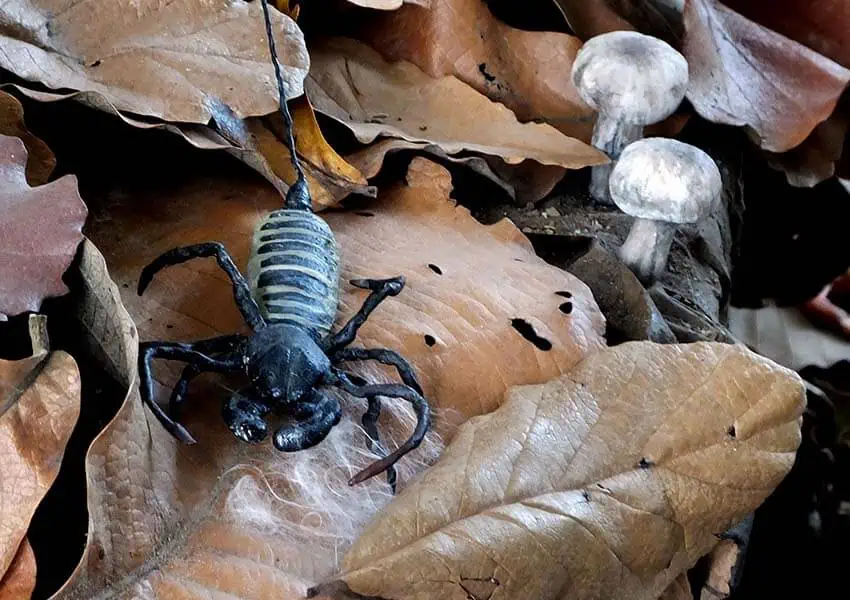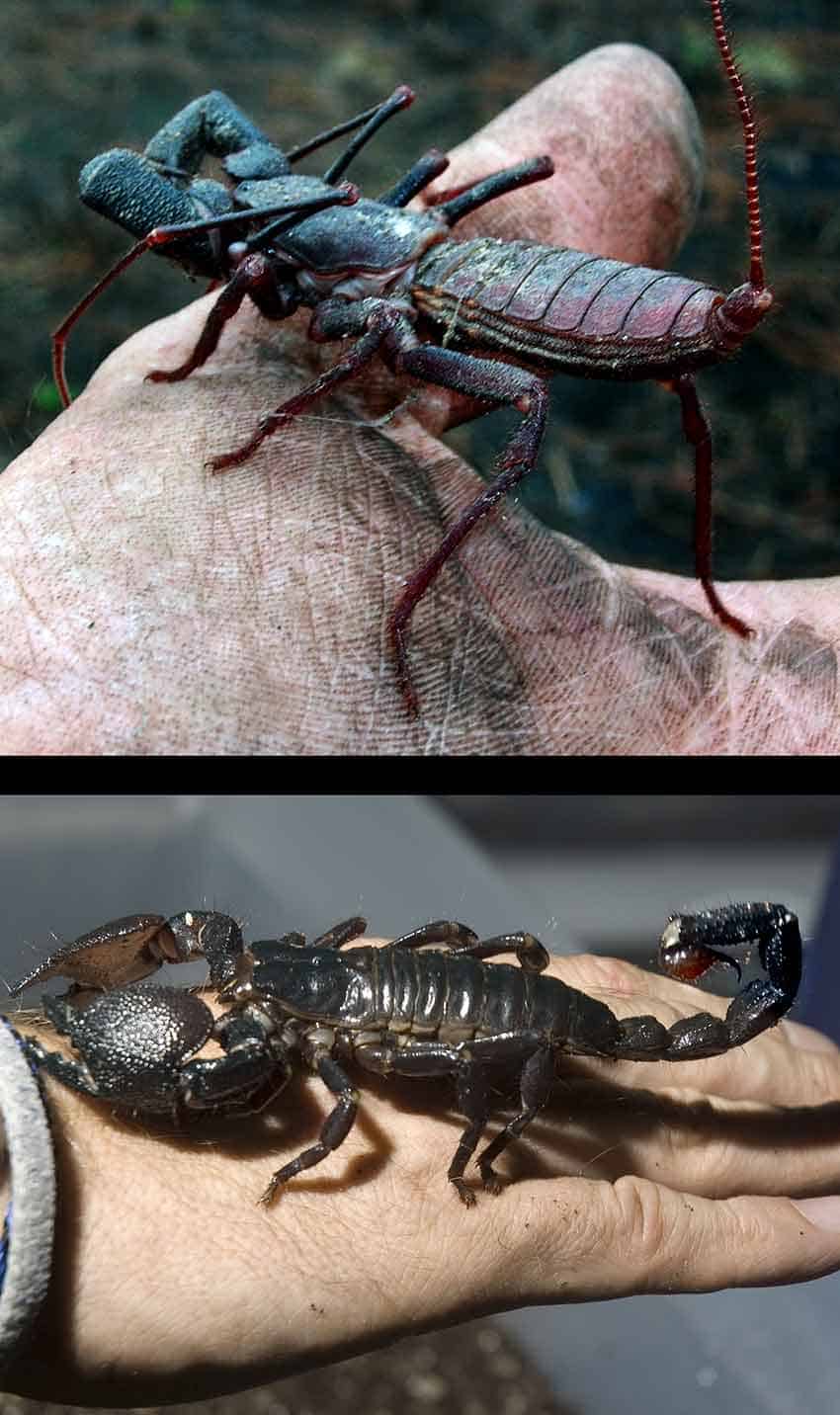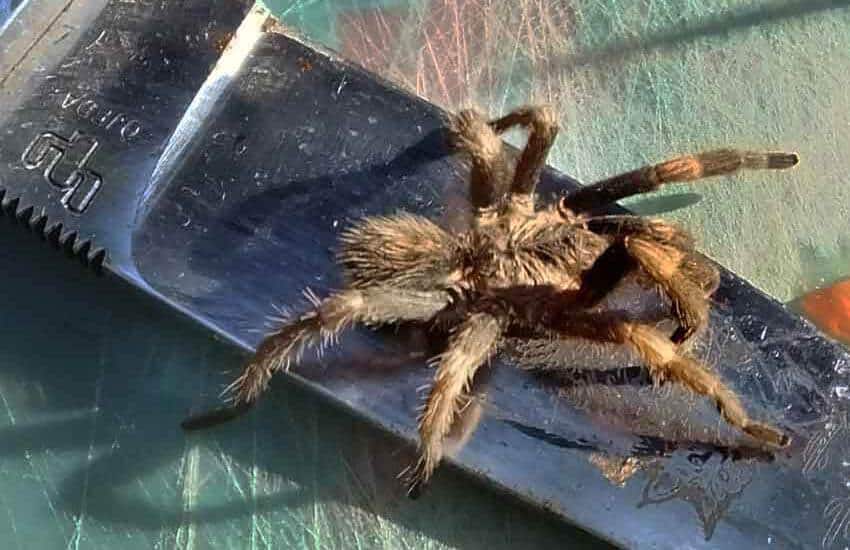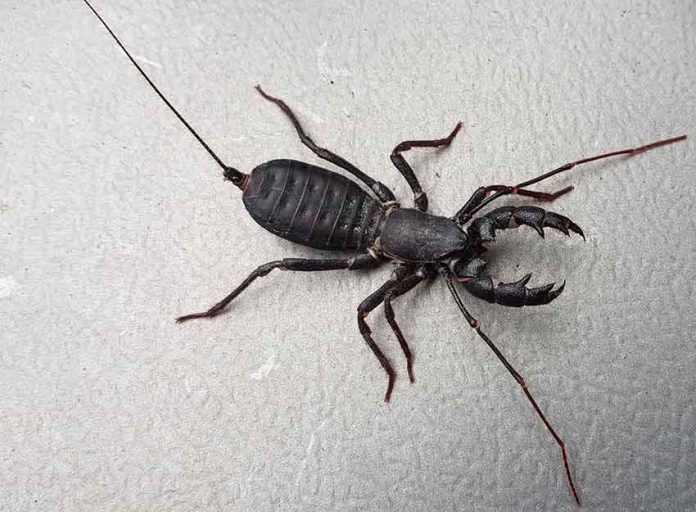If you live in rural Mexico or occasionally pass the night in a rustic cabin or campsite, you are bound to run into creeping creatures that you may never have seen back where you grew up.
Because, in a moment of panic, we might feel an impulse to squish that unfamiliar bug, I’d like to present here just a few creepers that may not be exactly glamorous (except to a biologist or an unspoiled baby) but present no danger to human beings and should be left to go on their way, or perhaps be given a little assistance in getting out of your house.
I’m a member of a rural community that has recently come closer together thanks to a WhatsApp chat group.
In the past, a neighbor of mine who found a bizarre-looking creature in his or her bed might have dispatched it without hesitation, but today he or she will first snap a picture of the invader and post it on the chat a few seconds later, usually adding, “OMG, look what I found hiding under my pillow!”
Within seconds, my naturalist friend Rodrigo Orozco will reply from wherever he may be, urging the sender to keep calm and explaining whether the intruder is harmful or harmless and what steps to take next.

Vinegaroons
Perhaps the most common Is this dangerous? image I see on our chat is a picture of a vinegaroon, known in Mexico as a vinagrillo and graced by scientists with the intimidating name of Mastigoproctus giganteus giganteus.
This creature, which may be black, gray or brown, could measure up to 15 centimeters (six inches) in length, including all its parts, with a pair of claws that look like they belong on a lobster. Its tail might just bring the words “dangerous stinger” to the lips of the beholder.
Don’t be fooled! Those fearsome claws are meant only to catch little bugs, and the vinegaroon is such a naive creature that it will probably never even think of misusing its claws to pinch someone like you.
As for that needle-like tail, it’s actually a flexible organ of touch used for investigative purposes and not a stinger at all. However, it definitely grabs the viewer’s eye, for which reason the vinegaroon is also called the whip scorpion in English.
Scorpion, it is not, but the tail does resemble a whip antenna.

With all that said, I must admit that the vinegaroon does possess its own special weapon and will not hesitate to use it if you mistreat the little guy in the slightest way.
Tickle a vinegarroon and it will retaliate by spraying you with something that smells just like vinegar.
This is a harmless mix of acetic plus caprylic acid and will not hurt you, but when sprayed into the eyes of a cat or dog, will definitely surprise the potential predator and send it running.
This trick has a certain useful effect on human beings too since the first thing you will do with the smelly vinegaroon is put it outside the house — which is exactly what it wants!
I once had a friend who kept a vinegaroon as a pet and would play with it when he was bored. Vinegaroons, in fact, are well-known to make good pets and will stop spraying the vinegar once they get to know you.
Best of all, they will keep your home free from scorpions and cockroaches. So, instead of chucking them out, maybe you’d like to invite a few in!

Tarantulas
Mexico is home to 92 species of tarantula. So, if you live in rural Mexico, it would not be the least bit unusual for you to eventually discover one of these large hairy arachnids creeping about under your coffee table.
Please don’t step on it because not one of Mexico’s tarantulas is dangerous to human beings, despite the never-ending avalanche of popular movies portraying them as deadly.
Fortunately, the Tarántulas de México Wildlife Management Unit (UMA) happens to be located in my community (Pinar de La Venta, just outside Guadalajara). Thus, many people on our local WhatsApp chat have had the privilege of holding a large tarantula in their hand and finding out for themselves that they are ever-so gentle and in no way harmful or dangerous.
People all around the world who want a tarantula as a pet inevitably seek out Mexican redknees (Brachypelma smithi), which are renowned for their gentleness as well as their beauty.
If you do discover a tarantula in your living room, it will most certainly be a male, as it is their mission to wander about looking for females — who habitually stay put inside their burrows.
To help that male get back outside where it can continue its romantic quest, place a capture jar or bowl over it and very gently slide a stiff piece of cardboard underneath.

Are you worried that the tarantula might jump on you as you are attempting to capture him?
Relax. Mexican tarantulas don’t jump upward, only forward, and for a grand distance of about three centimeters, or one inch! Tarantulas are not given to leaping because they are both heavy and delicate, so delicate that Rodrigo the tarantula expert reckons that a fall of only 30 centimeters — a foot — could be fatal to this gentle giant.
Remember this when you are carrying the creature outside and letting it go!
Just like the vinegaroon, the tarantula does possess its own unique defense weapon. Instead of spraying vinegar, the provoked tarantula turns around and, using its back legs, flicks a cloud of short, nearly invisible, urticating hairs right into the nose of, say, a curious tlacuache (possum) or mapache (raccoon) that was contemplating a quick meal.
While these urticating hairs will send the possum running, they won’t cause much of a problem to a human being. In fact, for many years the famous “itching powder” sold at novelty shops was made of tarantula hairs.
If there is a reason to be concerned about tarantulas, it is not because they pose a threat but because they are themselves threatened.

Many years ago, Rodrigo realized that some species of Mexican tarantulas were in danger of going extinct because poachers would allow hundreds of them to die in a clumsy effort to sell a dozen or so to traffickers, who would then supply them to customers in the United States.
He reckoned that the only way to stop this process was to flood the black market with Mexican tarantulas raised in captivity. Nearly 20 years later, Tarántulas de México is carrying out this mission, and the black market in illegal Mexican tarantulas is practically out of business.
So, if a vinegaroon or a tarantula should stop by for a visit, recognize them for the innocent creatures they are and treat them kindly!
More creepy but harmless creatures coming up next time: the millipede, the amblypygid and the ever-so-scary cara de niño (Jerusalem cricket).
The writer has lived near Guadalajara, Jalisco, for 31 years and is the author of A Guide to West Mexico’s Guachimontones and Surrounding Area and co-author of Outdoors in Western Mexico. More of his writing can be found on his website.

